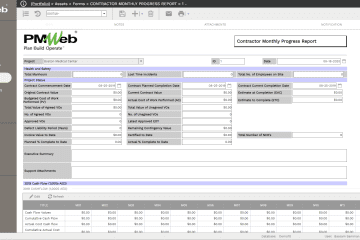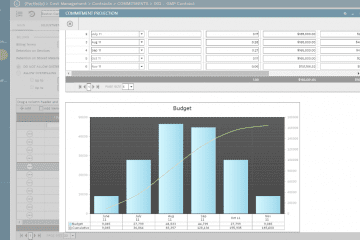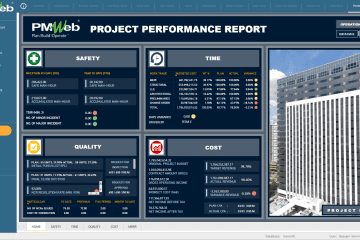Many capital projects centric organizations who have made or plans to make investments in Enterprise Document Management Systems (EDMS) and/or Enterprise Content Management Systems (ECMS) might wrongly assume that any of those two enterprise systems can replace the role than an Enterprise Project Management Information when it comes to managing, monitoring, evaluating and reporting the hundreds of processes that need to be managed during the capital project life cycle stages. Those are the processes that need to be performed during the initiation, planning, design, tender, construction, and turnover stages of a capital project. Processes that would include schedule, cost, quality, safety, risk, procurement, communication and other areas needed to manage the project which will be performed by individuals representing the different entities who will have contractual or non-contractual role performing those processes. The information generated from performing those everyday processes will become the only trusted source for project stakeholders to have the insight for making better and faster-informed decisions.
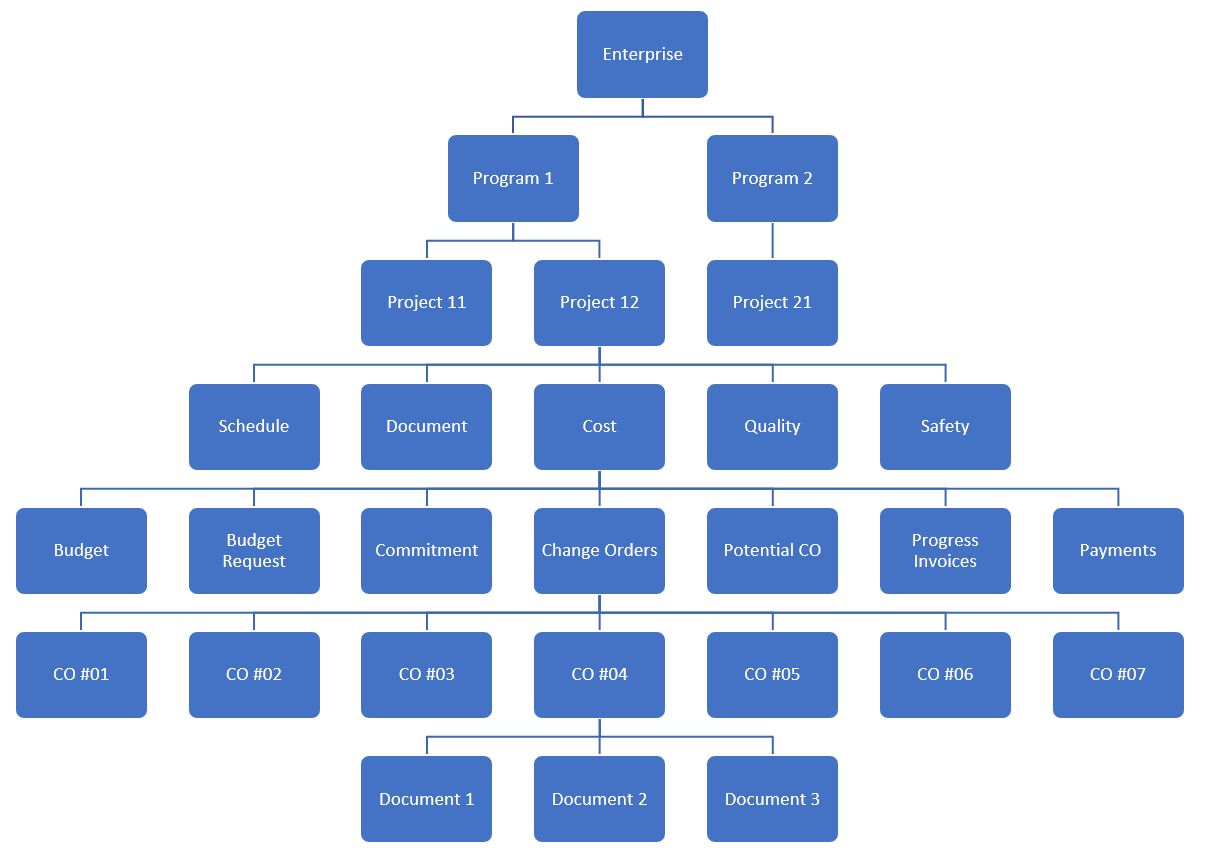
The main objective of an EDMS is usually to upload, store and share the documents into the EDMS database that are created using third-party applications like MS Excel, MS Word, Adobe PDF, AutoCAD, Revit among many others. Whereas an ECMS also adds the option of creating forms to capture the content or data of some of the templates created in MS Excel or MS Word into the ECMS database. Workflow to submit, review and approve the uploaded documents and completed forms is also available for both the EDMS and ECMS to ensure the needed collaboration. In addition, security and access rights for uploaded documents and created forms are also a function of such solutions.
Nevertheless, the forms that an organization would need to create in the ECMS would usually be limited to the general communication forms and would usually exclude the processes that have calculations and are integrated with other processes. For example, managing the project cost would require having the processes of the budget with the capability to do the spending projection, budget adjustments, commitments, potential change orders, change orders, progress invoices, payment, miscellaneous invoices, timesheets, funding requests, funding authorizations among others. An ECMCS solution is not usually configured to handle such processes. This would even become more complicated if there is a need to integrate those processes with the cost estimate, online bidding, bid analysis, revenue contracts, change orders to revenue contracts, revenue contracts requisitions and payments received.
Of course, there will be always someone who will say that all these processes can be developed in an ECMS but the question would be is how long this will take and at what price? Today, not only we should not be reinventing the wheel but what about the wasted funds if such costly development fails to deliver what is readily available from an Enterprise Project Management Information Systems like PMWeb can do.
Those commercially available Enterprise Project Management Information Systems like PMWeb are designed around the known best practices in managing projects and in particular capital projects. They are configured to manage programs, projects, and contracts which are core requirements when it comes to managing capital projects. There is no limit to the number of programs, projects, and contracts that can be managed in an Enterprise Project Management Information Systems like PMWeb to enable the organization to capture all current, planned, completed, and shelved projects regardless of their current project life cycle stage.
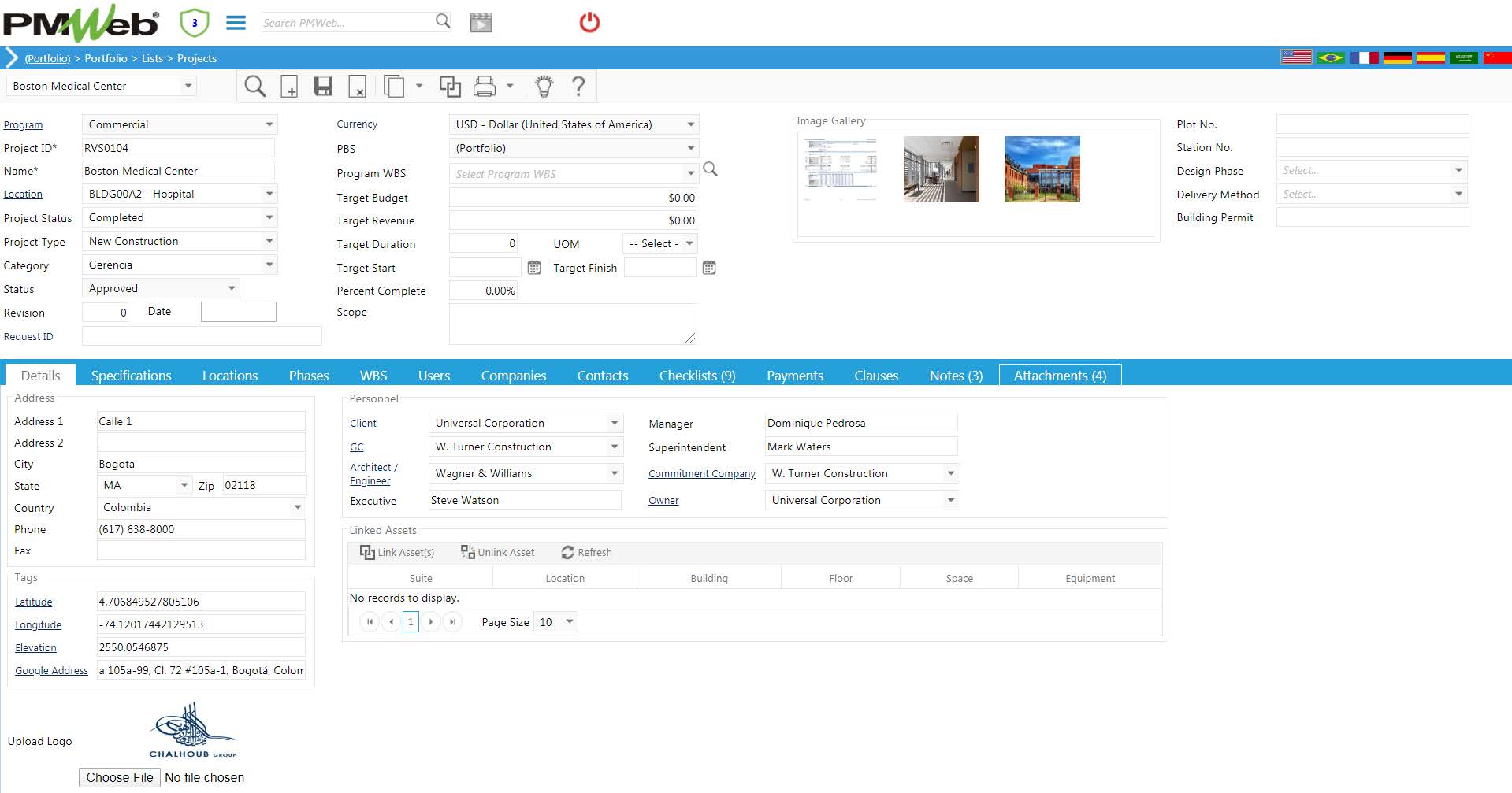
In addition, project schedules created in Primavera P6 and MS Project can be imported to their relevant project to enable associating records of schedule sensitive processes with their relevant project schedule activity. Those include for example the processes for Request for Information, Submittals, Daily Reports, Meeting Minutes, and Budget Projection among others. In addition, the percent complete associated with the project schedule activities can become the basis for calculating the interim progress invoice value for each commitment contract. Of course, there is always the option to create the project schedule in the PMWeb Scheduling module.
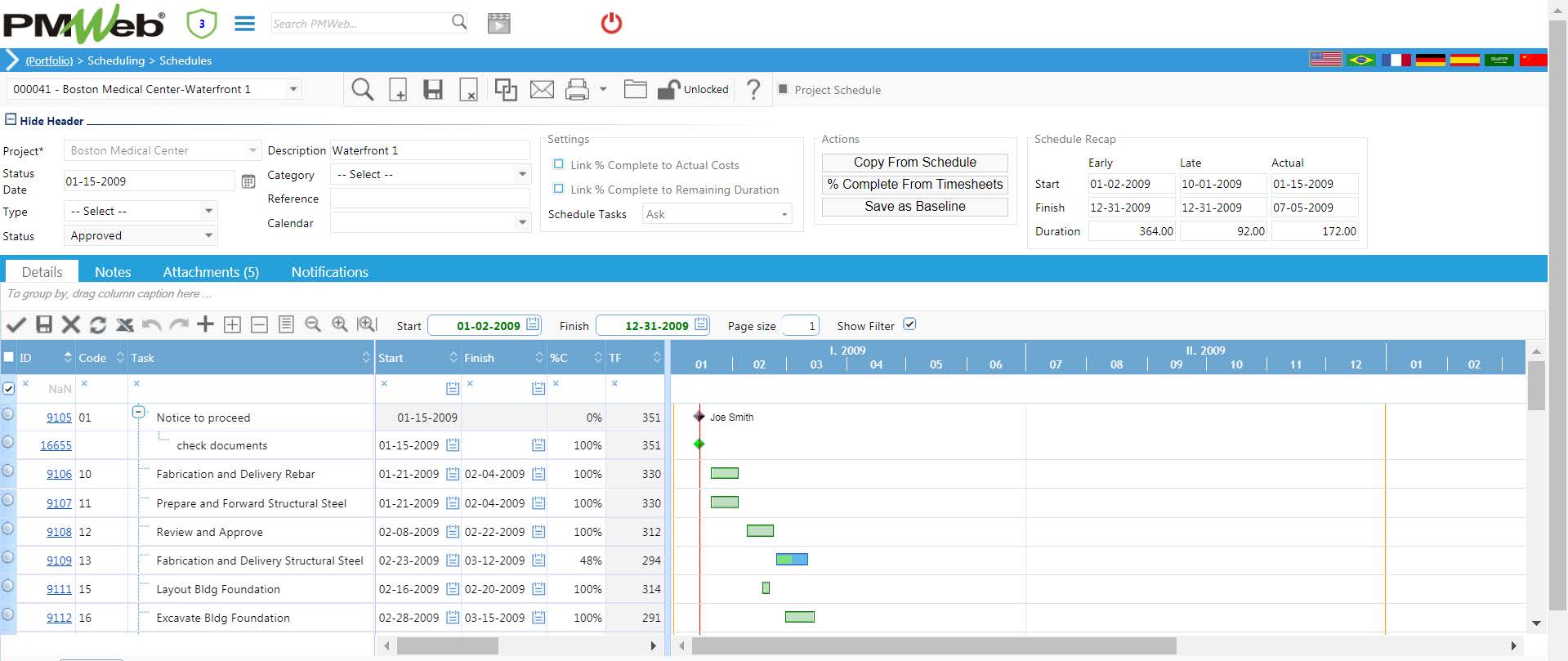
To fulfill the need for managing projects’ related documents and as the EDMS will provide, PMWeb Document Management module allows creating the folders and sub-folders needed to match each project’s physical filing room structure. This will enable assigning permission and access rights for each folder as well as defining the attributes that each folder might require. Documents can be uploaded in bulk in their designated folder were they can be stored and viewed. PMWeb allows maintaining multiple versions for the uploaded documents using the checkout and check in command. Also other functions like document search, linking one document to others, document workflow; document redlining and markup, notification subscriptions among others are available.
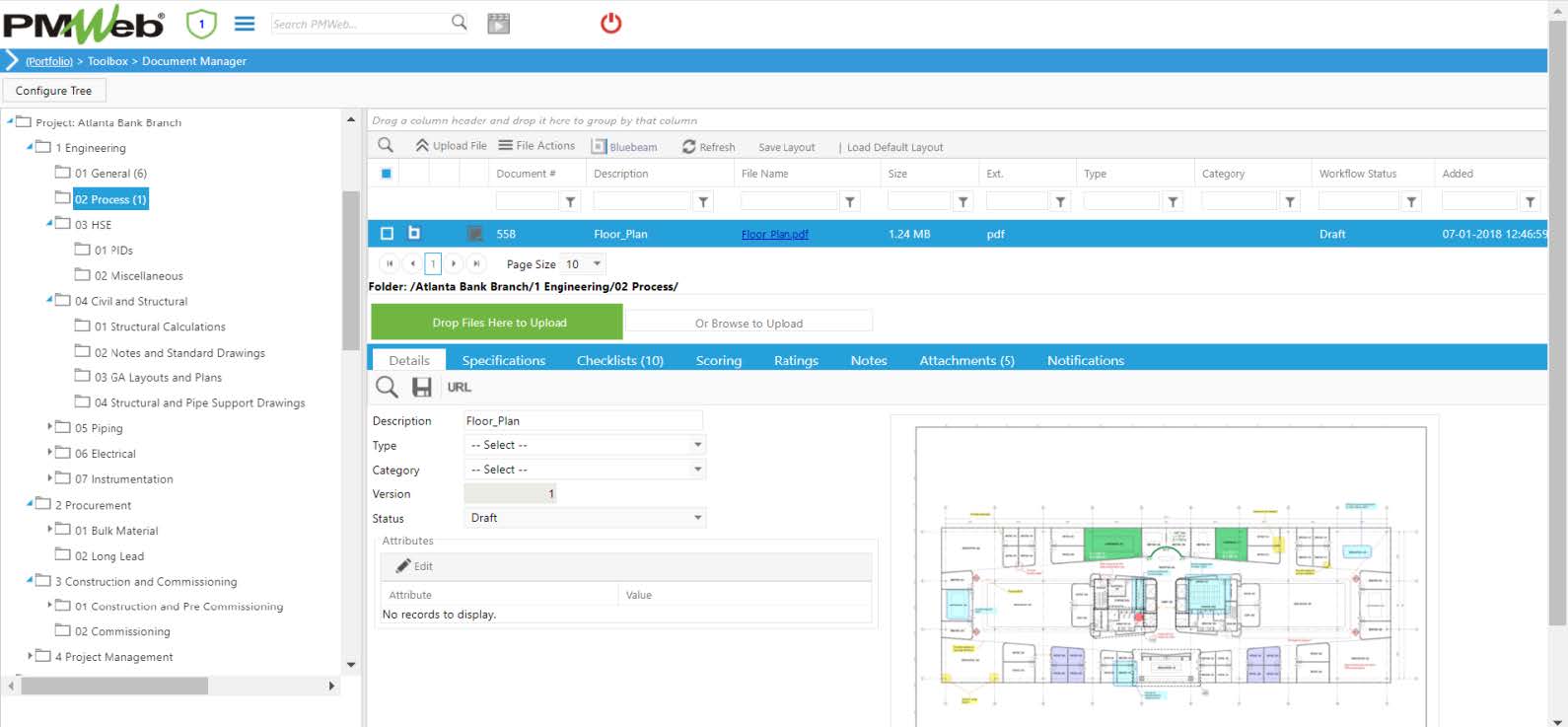
In addition, PMWeb comes ready with the core processes needed to manage capital projects. Those include for example safety incidents, RFI, submittal, Punch List, Meeting Minutes, Budget, Budget Adjustments, Commitments, Potential Change Orders, Change Orders, Progress Invoices, Payment, Miscellaneous invoices, Timesheets, Funding Requests, Funding Authorizations, cost estimate, bid comparison, stage gates and Risks among others.
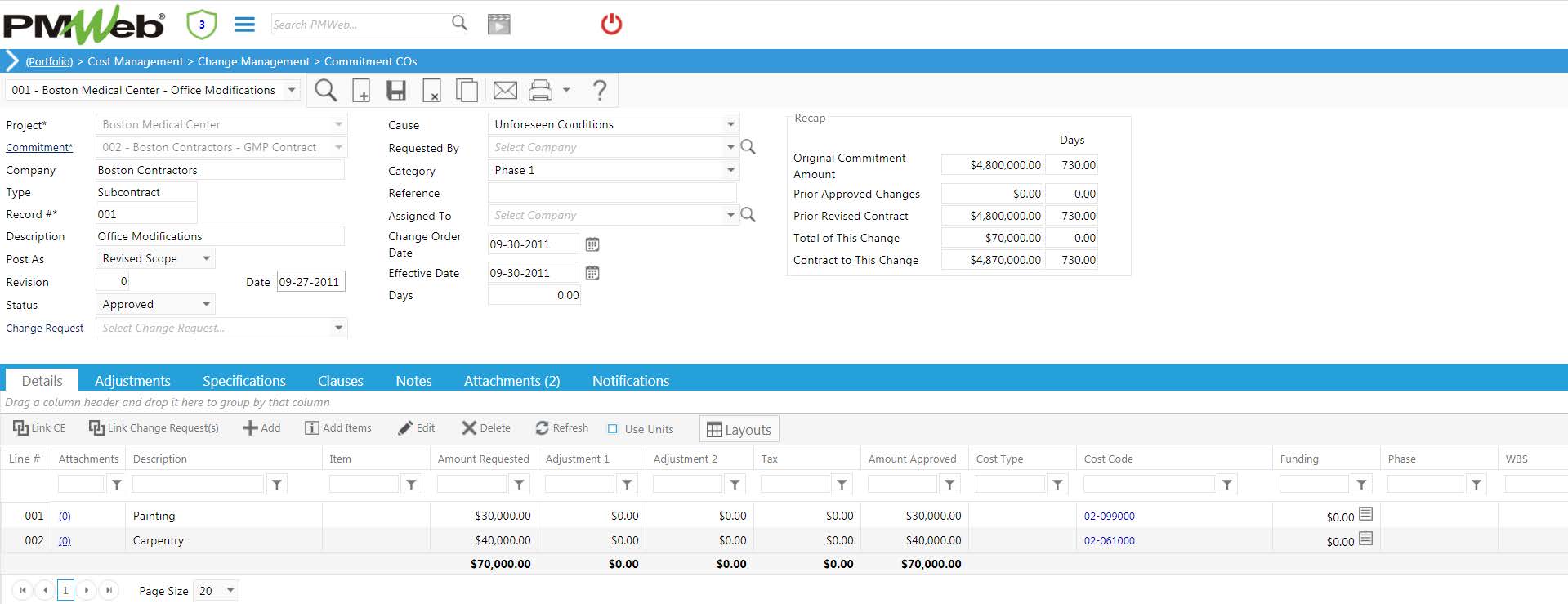
In addition, PMWeb Visual Form Builder allows creating the many other processes that are needed to manage capital projects. Those could include Work Inspection Request, Safety Compliance, Work Permits, Access Requests, Project Charter, Issues, Prequalification, Appraisal Reports, Lessons Learned, Closeout Report, Mobilization and Demobilization Checklists among many others.
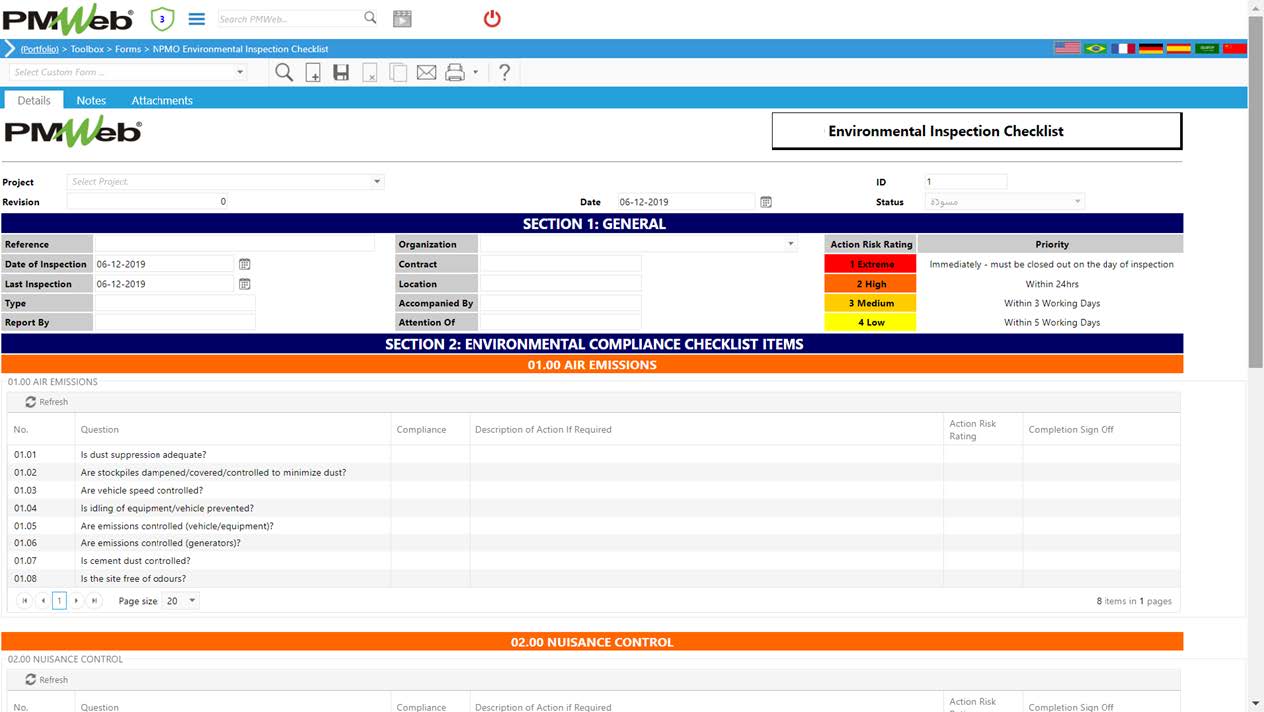
For each process, regardless if it was readily available or newly created, PMWeb Workflow module allows creating and assigning a workflow to map the steps needed for submitting, reviewing and approving those processes. The workflow will be used to map the sequence of those steps, define duration for each step, identify actions that can be taken at each step among others. In addition, rules can be added to the workflow to enforce the authority approval levels for processes that involve cost data as well as conditions that are related to process type and category to channel the workflow to the relevant individuals.
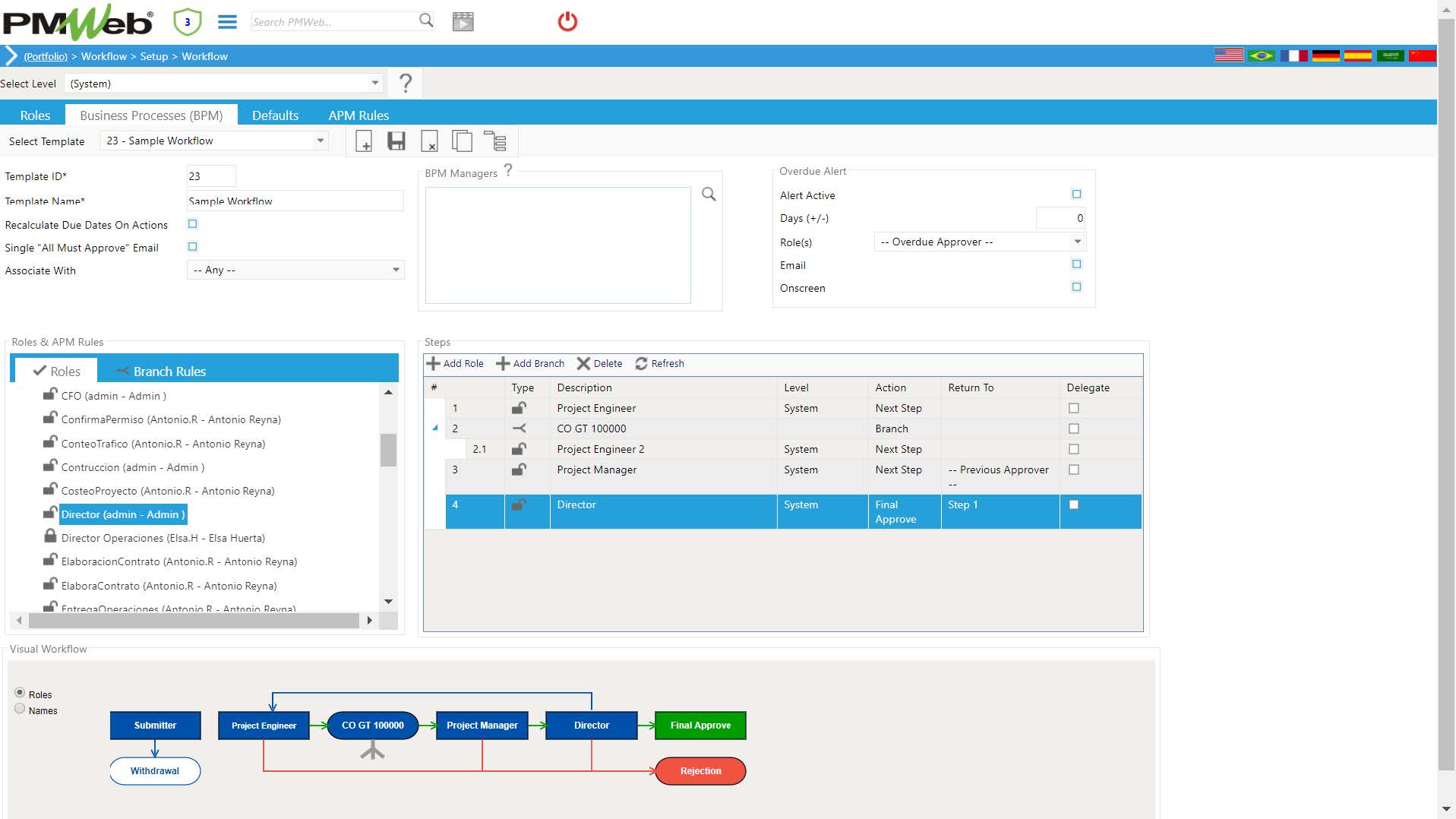
In addition to the ready to use output forms for the core processes that come ready with PMWeb, PMWeb allows the organization to design their own output forms for each process which could differ from one project to another. Those output forms can be designed to also include the list of documents attached to the process as well as the workflow status.
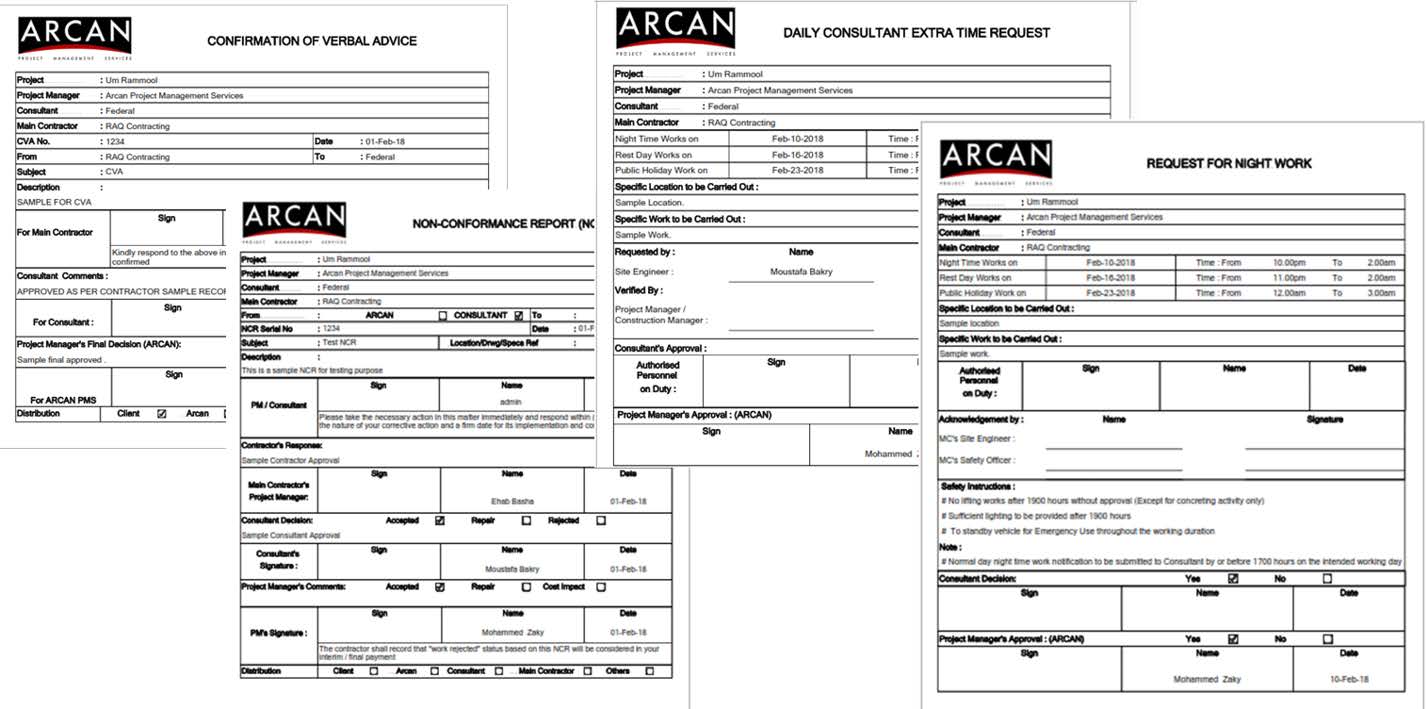
Having logs or registers for each process is also available by default in PMWeb for the core processes. In addition, to the many ready to use logs, the organization can also design their own logs and registers in the desired form and format. Those registers could include filters to limit what records to display as well as options for grouping and sorting the captured records. In addition, registers can be specific for a single project or might include a portfolio of projects to be reported on.
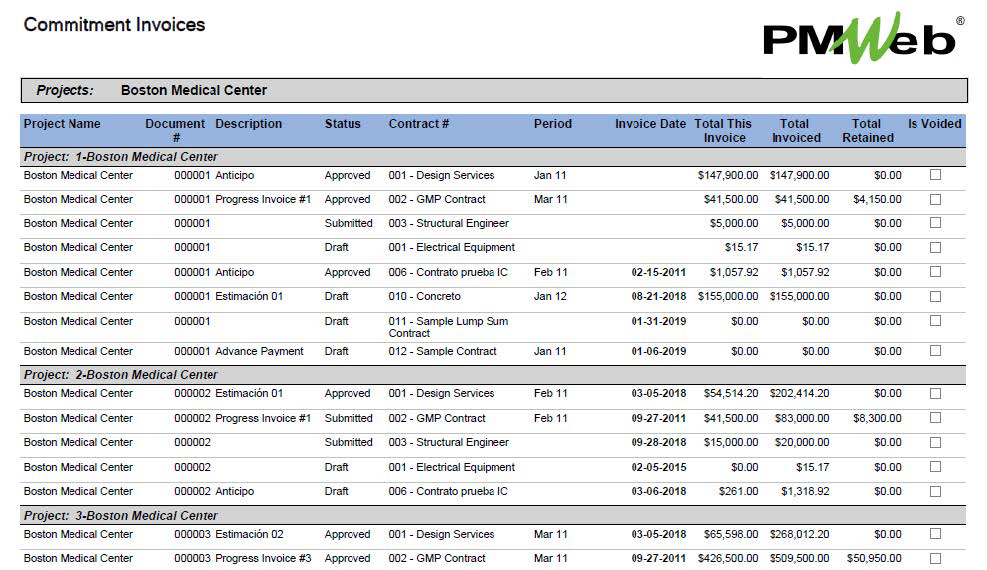
In addition to the simple logs and registers for each process, there could be a need to create reports that involve data from different processes. For example, the project cost report would need data from the budget, budget adjustments, commitments, potential change orders, change orders, progress invoices, payment, miscellaneous invoices and timesheet modules. Although little effort is needed to create such a report as PMWeb will have this processes association automatically available in the cost worksheet but this might not be the case with other reports that need to query and associate data from different processes.

The information can captured in those processes will become the basis for creating dashboards that provide the organization with an overview of how each project management function is performing. For example, dashboards for project schedule, cost, quality, safety, risk, procurement among others can be also created. Those dashboards will be used to aggregate and consolidate the information from their relevant processes as well as provide the measures and key performance indicators (KPIs) to enable stakeholder to better understand, monitor, evaluate and report on the performance of the different project management perspectives.
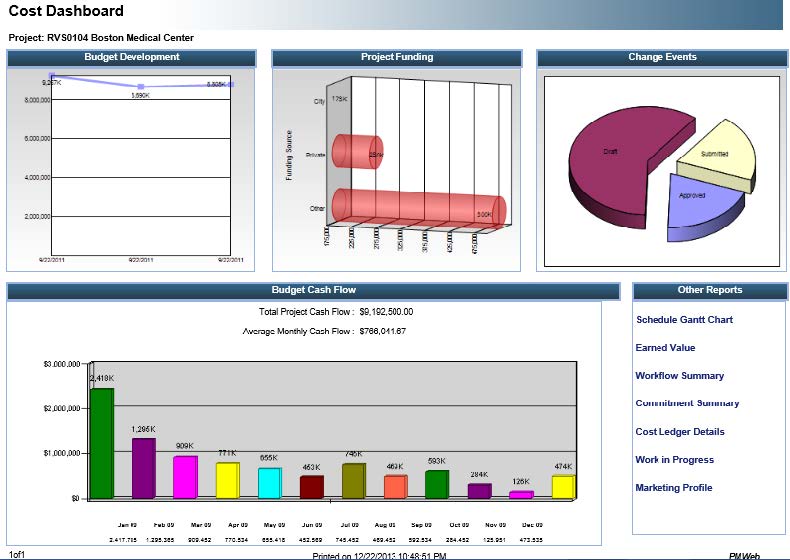
In addition, the same information captured in the different project management processes will become the basis for creating the overall project performance dashboard. The dashboard which can be designed in any desired form and format would include the different measures and key performance indicators (KPIs) needed to provide an overall status of how the project is performing.

Since most capital projects centric organizations use those projects to achieve their business strategic objectives, usually projects are aligned with programs which represent s the different strategic initiatives that the organization has. In addition, programs can be also used to represent the different business units that those organizations have. Accordingly, the program dashboards are dashboards that are designed to monitor, evaluate and report the performance of projects that belong to a program. The layout of those dashboards is fully customizable to meet the organization’s own reporting requirements.
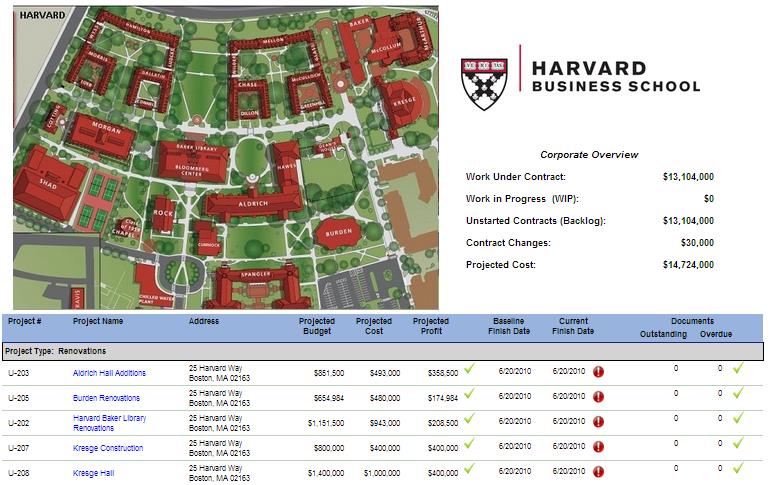
Finally, a dashboard can be also created to capture the details of all projects that the organization has regardless of their status and the project life cycle stage they belong to. This enterprise dashboard would usually include a map to detail the location of the projects being reported on.
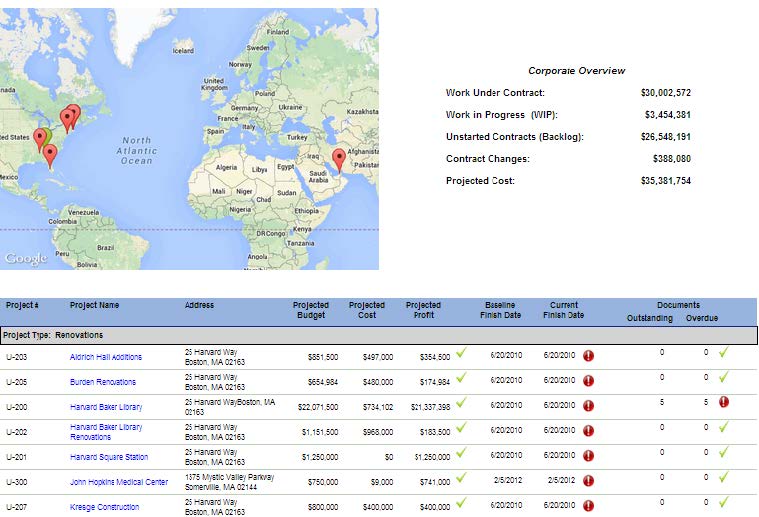
In conclusion, EDMS and ECMS will always exist in projects’ centric organizations as they have an important function that will be always needed to fulfill. Nevertheless, when it comes to managing capital project delivery, those solutions are not specifically designed to manage the hundreds of processes needed for those processes. This is no different than other applications for accounting, HR, CRM, and other functions that could exist within those organizations. An Enterprise Project Management Information Systems solution like PMWeb helps organizations in enforcing the growing need for adopting project management best practices, project governance, transparency, accountability, and real-time single version of the truth reporting of projects’ performance.
